What’s YOUR colour IQ? Take the test to see how your perception of different shades compares to other people your age
Anyone who has ever stared in despair at a paint color chart knows that it’s not always easy to distinguish between the different shades.
Due to our biological differences, some people seem to be able to effortlessly distinguish the subtlest shades, while others have difficulty finding matching socks.
Ever wondered where you fall on the color spectrum? A new test shows how you stack up against your peers.
This seemingly difficult test tasks you with sorting colors based on their shades.
So, what’s your color IQ? Take the test via this link to find out.
To see where you fall on the color IQ spectrum, this test can determine how your color perception compares to that of other people your age
The test, developed by X-rite Pantone, is a simplified version of the Farnsworth Munsell 100 Hue Test, which was developed in the 1940s by a scientist named Dean Farnsworth.
The real test is a physical box containing 100 small chips, each with a different color on top.
As in the online version, participants must place the pieces in the correct color order. They are awarded points based on how many chips are placed incorrectly and how far apart the errors are.
This test assesses your ability to recognize small differences between similar colors.
To take the test, click and drag the color tiles so that they are arranged in order of hue. This creates a smooth transition between the two solid colors at either end.
Once you have completed all four tests, click ‘Rate My Test’ to view your results.
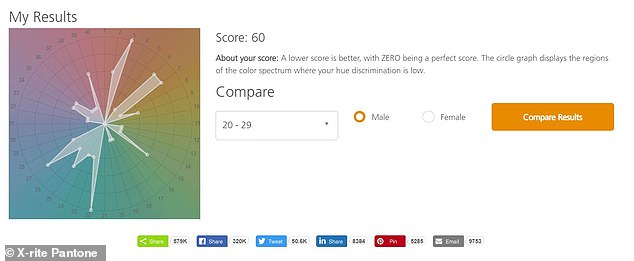
After you complete the test, enter your age and gender to see how you compare to other people in your demographic group
The test also asks for your age and gender, so you can see how well you rank against your target audience.
You get ‘points’ for your mistakes, so the lower your score the better. Zero is a perfect grade.
However, don’t be surprised if you get a lower score than you expected, especially if you are a man.
One in 255 women has some form of color blindness, but for men this is even the case for one in twelve.
We can perceive colours thanks to specialised cells in our eyes, called cones. These cells are specialised in perceiving light with a long or medium wavelength.
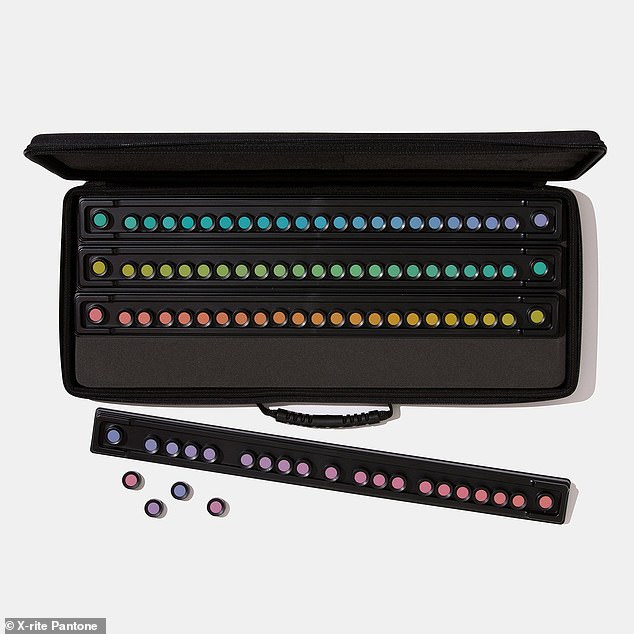
This test is based on the Farnsworth Munsell 100 Hue Test (pictured) which was developed in the 1940s by a scientist named Dean Farnsworth to assess people’s ability to perceive color differences
In people with color vision deficiency or color blindness, some types of cones are missing or inactive.
This means that there are parts of the visible light spectrum that your eyes cannot register, making it harder to see the difference between similar shades.
As we age, our color vision also deteriorates due to changes in the lenses of our eyes.
After the age of 40, the lens begins to yellow, reducing the amount of light reaching the retina and changing our color perception.
This, combined with the natural aging of the cone cells, may mean that older people may find the test more difficult.
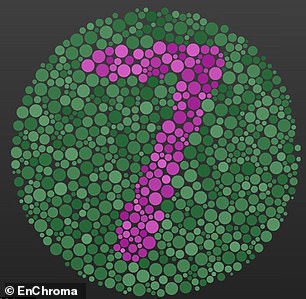
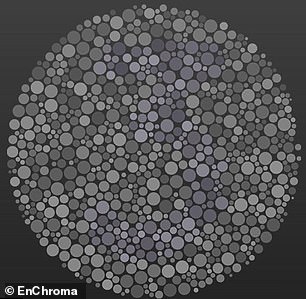
One in 255 women and one in 12 men have some form of visual impairment. This can mean that the letter in the image on the left is clear, but the letter on the right is much harder to spot.
However, if you get a lower score on the test than you expected, it is not necessarily due to a visual impairment.
Research has shown that people’s color perception can also be influenced by factors in their environment.
Scientists at the University of Nevada discovered that the distribution of perceived colors can be affected by something as subtle as the changing of the seasons.
Their research found that the color people identified as yellow changed depending on the time of year, even though the activation in their rod cells remained the same.
In their paper, published in Network, the researchers wrote: ‘Seasonal climate changes alter both the average color in scenes and the way colors are distributed around the average.’

Your test results can also be affected by the lighting conditions around you. Incandescent light bulbs (left) contain a very different spectrum of light than daylight (right), which determines which wavelengths reach your eyes
Factors such as lighting and the colors you see in the background also have a big influence on what colors you see.
In a blog post, the test’s creators write: ‘As strange as it may sound, objects themselves have no color. They have properties that determine which wavelengths of light are absorbed and which are reflected.’
This means that the tone of the light falling on an object changes the wavelength of light falling on our eyes.
That’s why clothes you buy in the store under fluorescent light often look very different when you put them in sunlight.
Because our brains process more visual information than we can, they have also ‘learned’ what objects should look like.
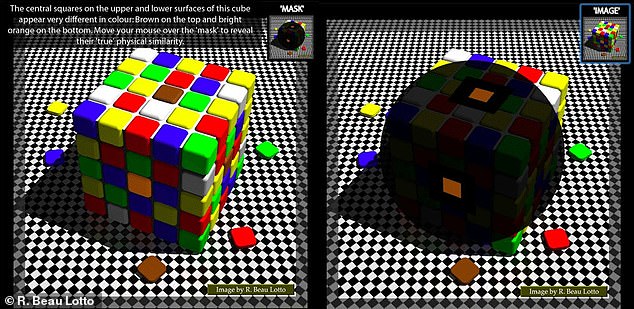
Our brains make assumptions about how things look based on the colors and expected lighting. This is why the brown square looks different on the “shadowed” side of the block than the brown square at the top (left), even though you can see they are actually the same color (right)
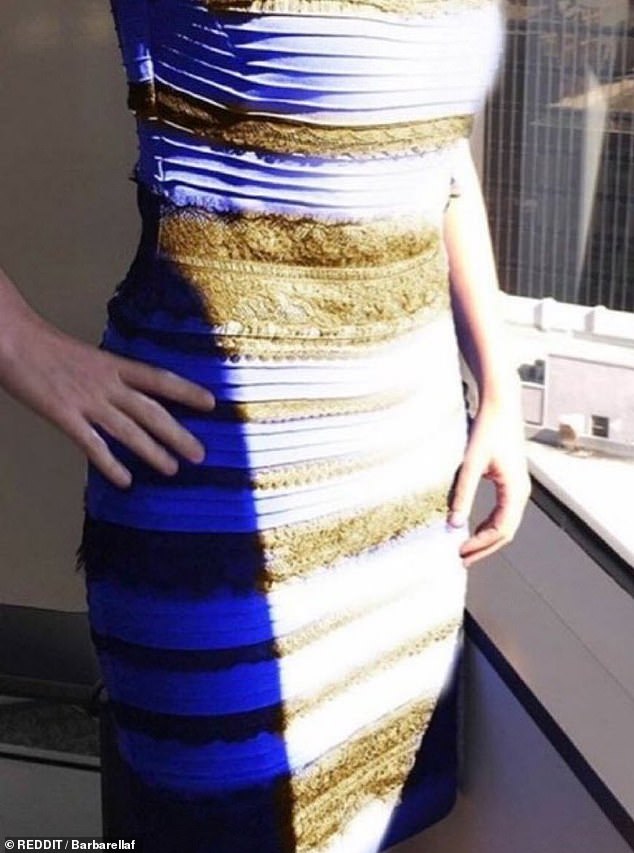
The famous ‘gold and white’ dress is an example of how our assumptions about lighting alter our perception of colour. In this photo you can see how the dark side of the dress appears closer to blue, while the light side appears white
Normally this helps us fill in the gaps in our visual perceptions and experience the world.
But if those assumptions are wrong, it can lead to us perceiving colors in the world incorrectly, in the form of optical illusions.
Just like with the famous blue-black or white-gold dress, our brain makes assumptions about lighting conditions that actually change the colors we see.
Your test results may vary greatly depending on whether you are outside against a green park or inside against white walls.
Therefore, the real Farnsworth Munsell 100 Hue Test is typically performed under standardized lighting conditions to avoid unwanted interference.
